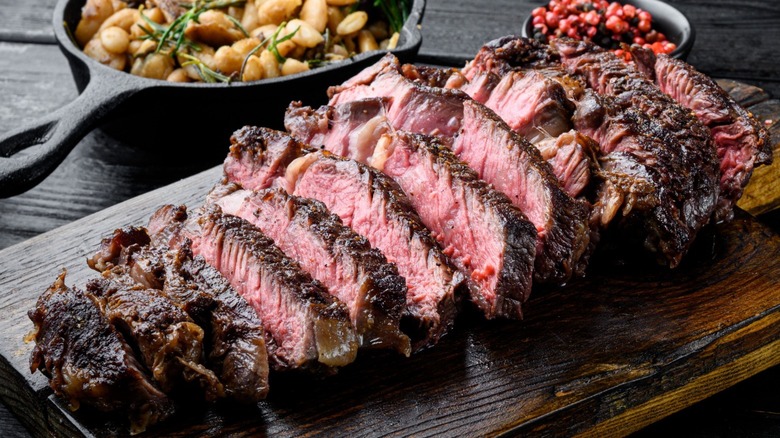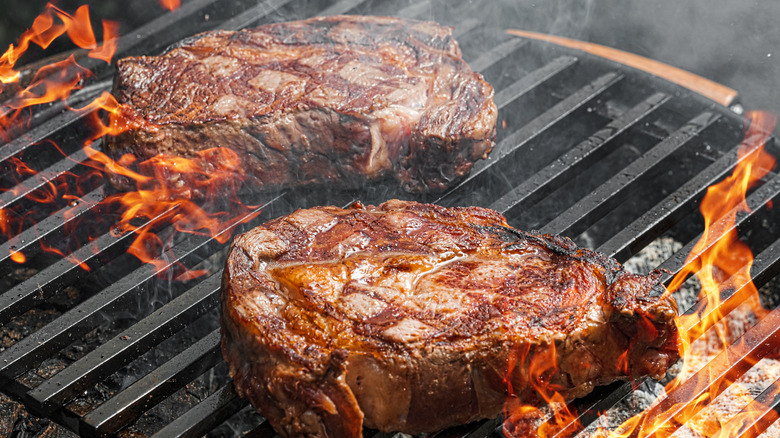The Classic Steak Mistake You Need To Avoid
Have you ever found that whenever you cook steak, it ends up looking steamed without that desired crispy, darkened finish?
According to Weber, the outdoor grilling accessories manufacturer, the correct grilling temperature is between 450 to 500 degrees Fahrenheit. In the case of indoor cooking on a flat top or in a frying pan, the butter and cooking oil should be at their hottest without smoking, per the New York Times, equating to temperatures slightly lower than 400 degrees Fahrenheit.
In the case of grilling over charcoal, the coals need to be at medium heat, so when measured at the height of the cooking surface, it should amount to 450 to 500 degrees Fahrenheit, as per Weber. Few people will reach for the thermometer to test the heat, so let's say that the angry hissing noise when your steak touches the hot surface is a good indicator that you have the temperature right.
Why do people struggle to get a good sear?
The purpose of a searing steak is to optimize its flavor. As essential as the correct temperature is to a well-seared steak, it is a mistake to think it is the only factor. According to Rich's, proteins release moisture when cooking, which can get in the way of a good sear. As such, the rule with browning and searing is that the quality of sear depends on how dry the steak is before placing it onto the heat, per Does Eat Place.
The best way to combat moisture interference is to pat the meat dry — in so doing, minimizing the moisture that will impede the steak's cooking process while leaving the tasty juices inside the steak. The dry surfaces of the steaks will then seal as they sear, creating a dry, crispy exterior, per Food Fire Friends, allowing for a complementing contrast of taste and texture. For extra crispness, try a dry rub or cornstarch coating on the outside after patting your steak dry.

